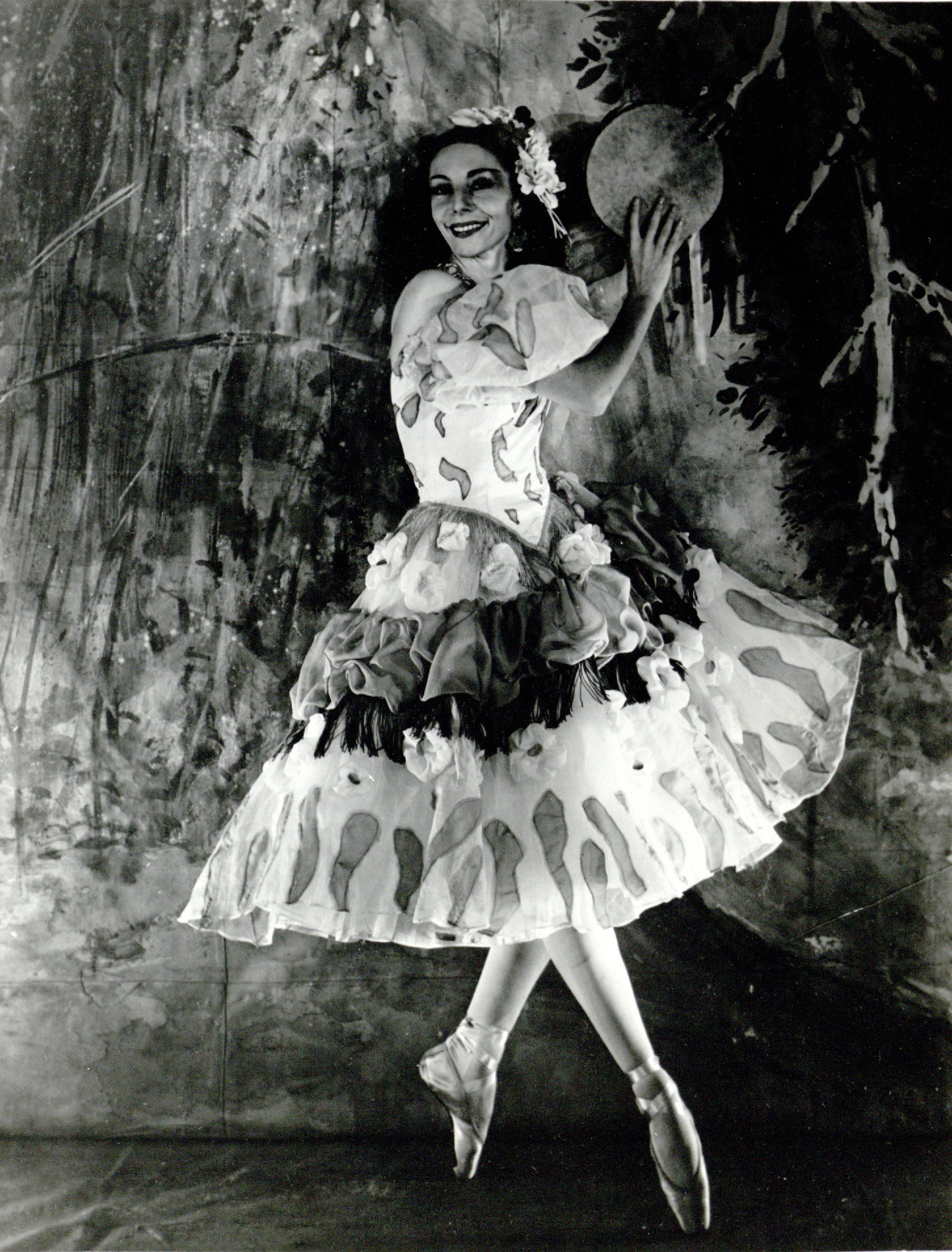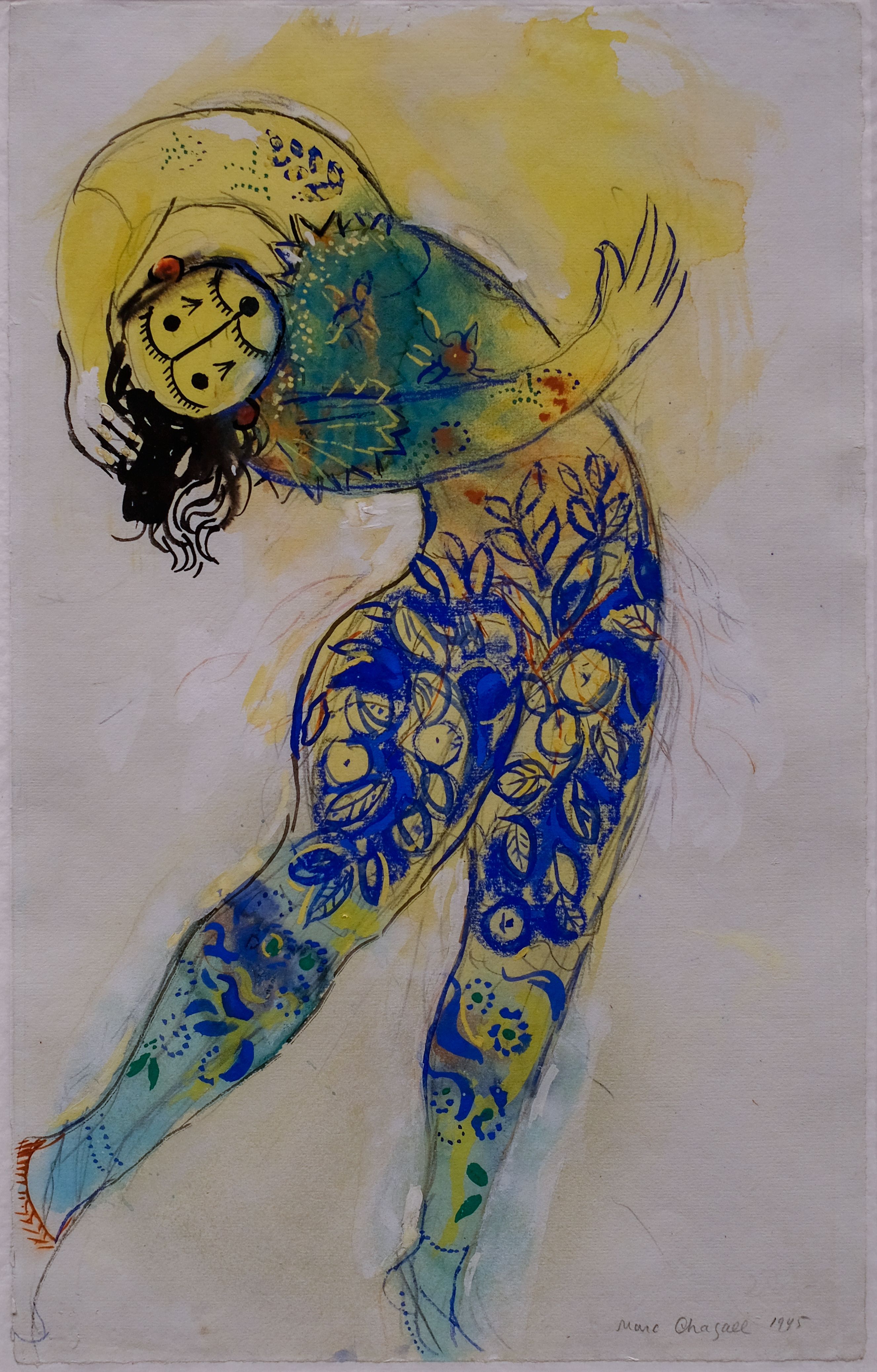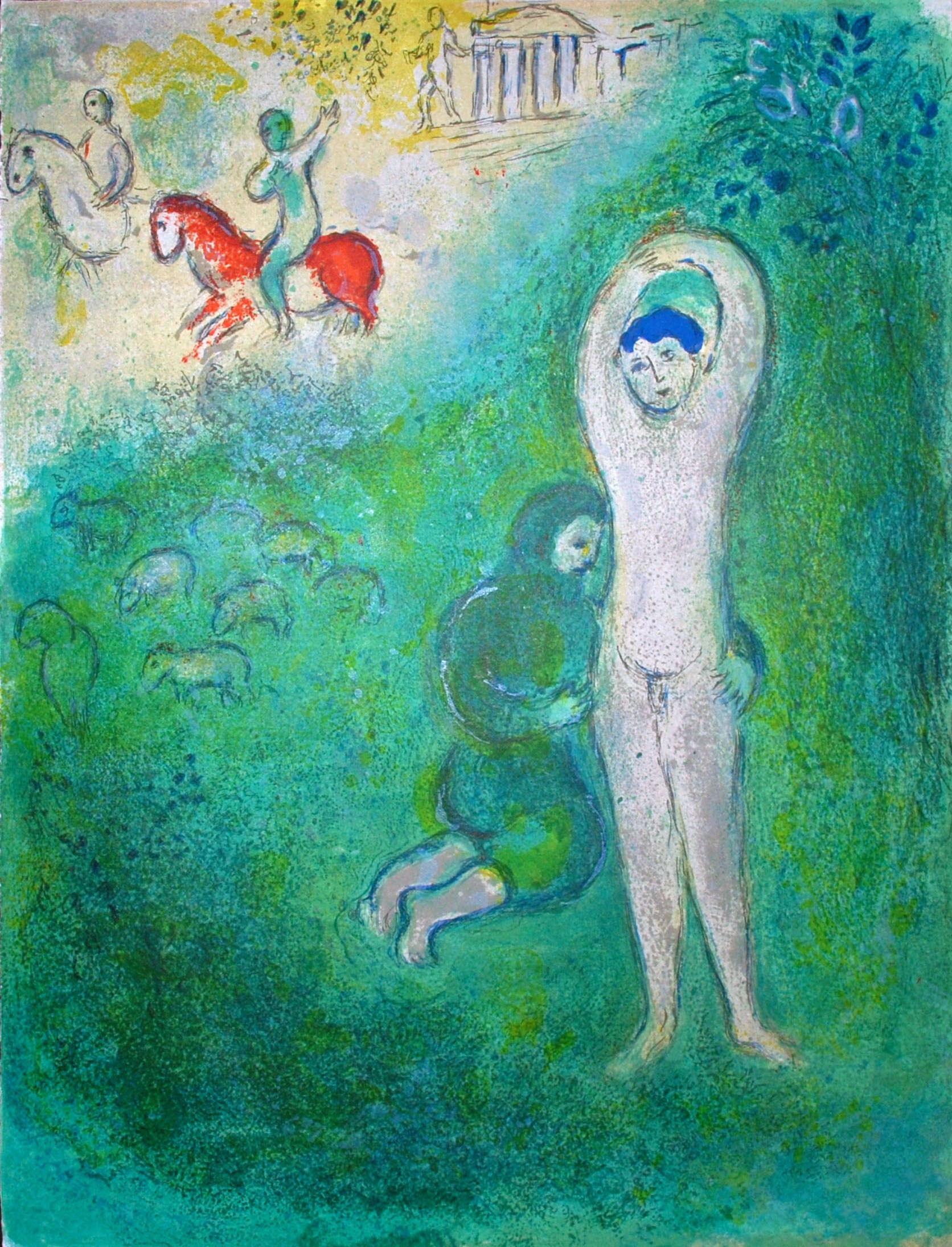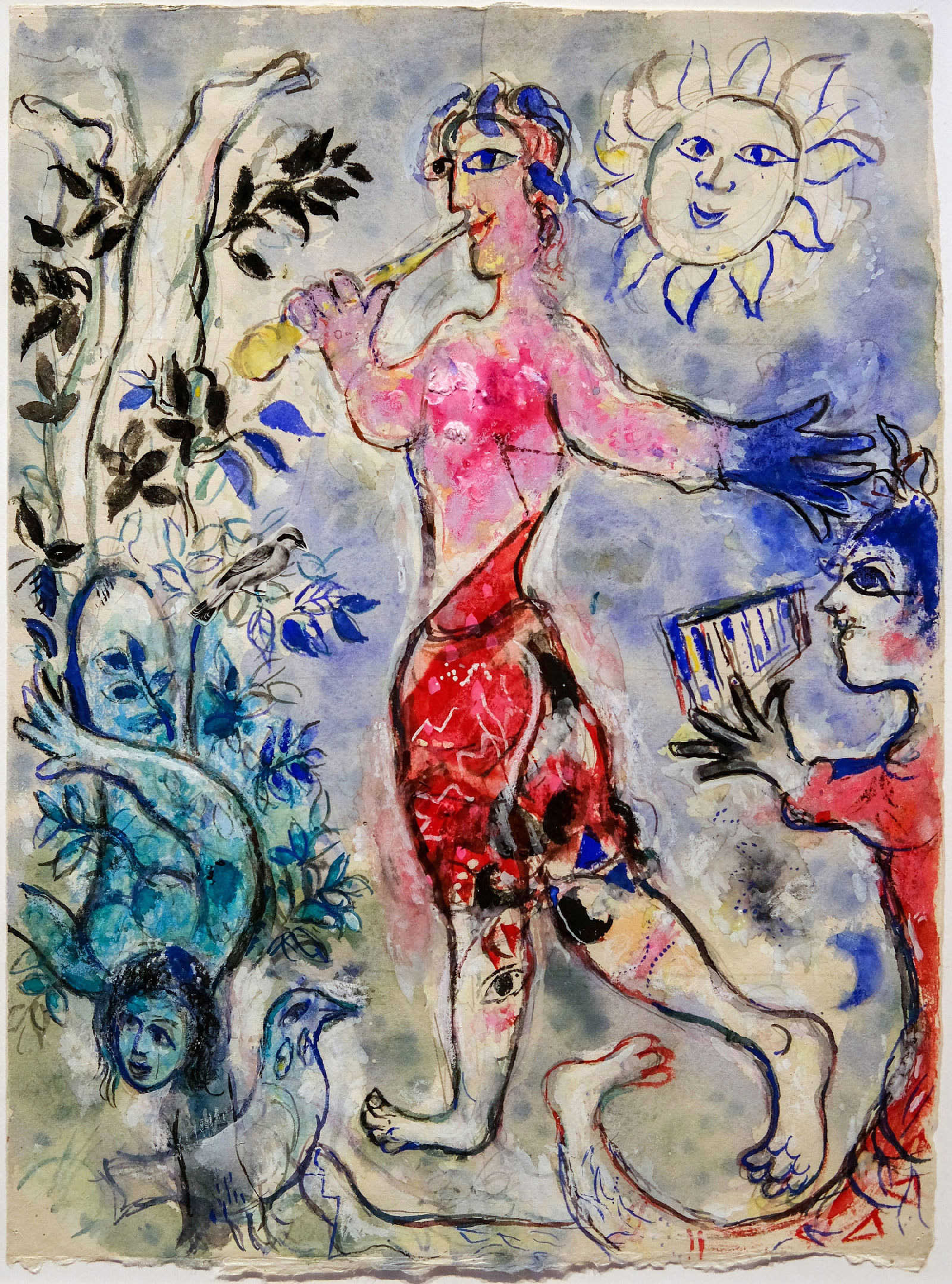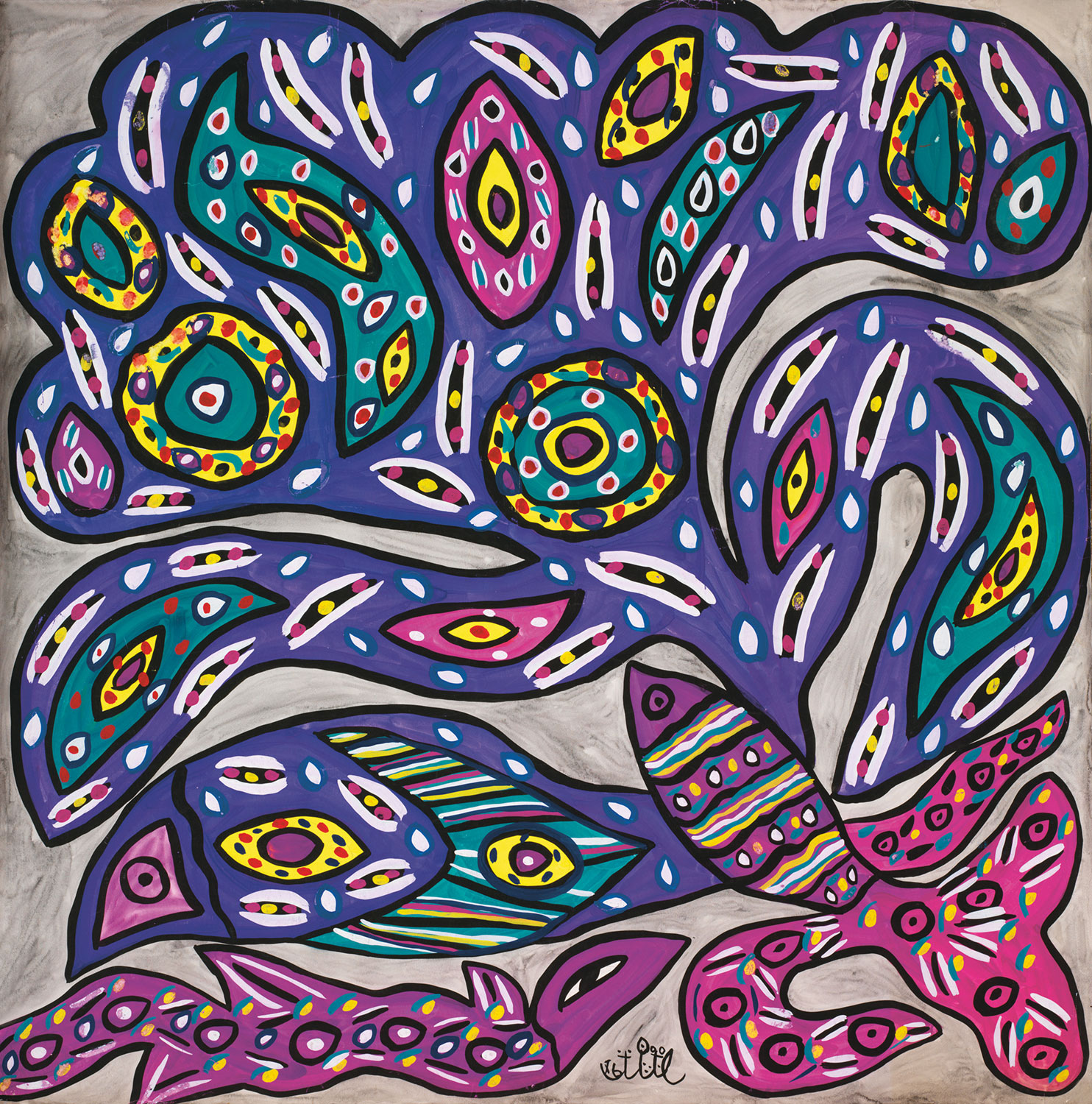Chagall Theatre Works, Set Designs, Costumes and Panels
Aleko – The Ballet (Mexico, 1942)

In 1942, Chagall was commissioned by the Ballet Theatre to design the sets and costumes for the ballet Aleko. The ballet was planned for New York, but the cost of mounting it there proved too exorbitant so the production was moved to Mexico, where qualified labour was far cheaper. Chagall travelled to Mexico City with his wife Bella, Massine and the Ballet Theatre troupe, to complete work on the production and begin rehearsing in the Palacio de Bellas Artes.
Chagall fell under the charm of the city of Mexico. The mythologies of Mexico and Russia seemed to come together for him at this time, and he drew upon his most precious memories, infusing them with new life. Chagall executed the four backdrops for Aleko in Mexico . They were monumental compositions that set the tone for each of ballet’s four scenes.


The story of Aleko has the simplicity of a melodrama or an ancient tragedy. Aleko, a young Russian aristocrat, weary of his frivolous life, has joined a band of gypsies. He then falls in love with Zemphira, the daughter of the tribe’s chief, but surprises her in the arms of another man. Mad with jealousy, he kills the gypsy girl and her lover. Devastated by the death of his daughter, the gypsy chief banishes Aleko from the community forever. The story is based on one of Pushkin’s most famous poems and touched Chagall deeply, as it evoked exile, the nomadic life and his own lost Russia.

The Firebird – The Ballet (New York, 1945)

In 1945 Chagall designed the backdrops and costumes for a New York production of Igor Stravinsky’s ballet The Firebird. The Firebird premiered on October 24, 1945. Diaghilev had staged a first version in 1910 for the second season of the Ballets Russes. The premiere, which took place later that year at the Opéra de Paris, was a triumph. Sol Hurok, impresario of the Ballet Theatre in New York, had the idea of restaging the legendary ballet. Scheduling it for the company’s 1945–46 season, he invited Adolph Bolm to create a new choreography and Chagall to design the sets and costumes and Stravinsky was asked to rework his score.

In 1944, Chagall suffered the terrible blow of his beloved Bella’s death. Working on the preparatory sketches for the sets and costumes for The Firebird, he rediscovered in painting something of the paradise he had lost. Inspired by a Russian tale, The Firebird tells the story of a young prince, Ivan Tsarevitch, who frees a captive princess from a spell by means of a magnificent bird with feathers of fire. The old Russian tale the ballet is based on corresponded perfectly to his fantastic imaginary world. The painting he did for the project was life affirming for Chagall, because it allowed him to re-create the hope he believed in so deeply and the message at the heart of The Firebird; the life-affirming power of love.


Daphnis & Cloe – The Ballet (Brussels & Paris, 1958-1959)

The French publisher Tériade was eager to produce an illustrated edition of the ancient Greek romance Daphnis and Chloe, written by Longus, and asked Chagall to produce illustrations for the book. Chagall travelled to Greece in 1952, which made a profound and lasting impact on him. He was moved by the clarity of the light in Greece. Over the the next few years, Chagall would interpret the story of Daphnis and Chloe in lithographs, on ceramics and in costumes and sets for the ballet.

Commissioned by the Opéra de Paris ballet, Chagall’s version of Daphnis and Chloe was first staged with a new choreography by Serge Lifar in 1958, at the Brussels World’s Fair. A year later, George Skibine created a new version of the ballet, which was performed in Paris. Chagall worked closely with the choreographers and the dancers. He had an acute understanding of bodily movement and gesture and the dynamism of line was so important to him that some costumes were painted directly on the dancers’ leotards.


The Magic Flute – New York Metropolitan Opera 1967

Chagall’s ultimate stage experience would focus on Mozart’s Magic Flute. The idea for the production came from Rudolph Bing, director of New York’s Metropolitan Opera, who was planning a revival of The Magic Flute as part of the inaugural season of the new Met. Chagall, who felt the same admiration for Mozart as he did for Rembrandt, embraced the project enthusiastically. The Magic Flute was not only a musical masterpiece but also a philosophical source comparable to the Bible. He saw the work as a form of religious ritual, illustrating the opposing forces that are part of creation and that battle for power over the human soul.
He saw the work as an illustration of the opposing forces that are part of creation and the battle for power over the human soul. “Perfection is close to death,” Chagall said in reference to The Magic Flute as it premiered just two months prior to Mozart’s death on December 5, 1791, continuing on to say, “For me there is nothing on Earth that approaches those two perfections– The Magic Flute and the Bible.”
It took Chagall three years to design the sets and costumes, and the huge number of sketches, drawings and models he executed. His excitement over this project was evident in his enthusiasm. Working on the complex staging, it was vital to take full account of the singers – their precise position on the stage and their poses as dictated by the narrative, vocal technique and stage directions. It required a scenographic approach that was less balletic and closer to the strategies employed for theatre and the mass spectacles of Russia’s revolutionary period.
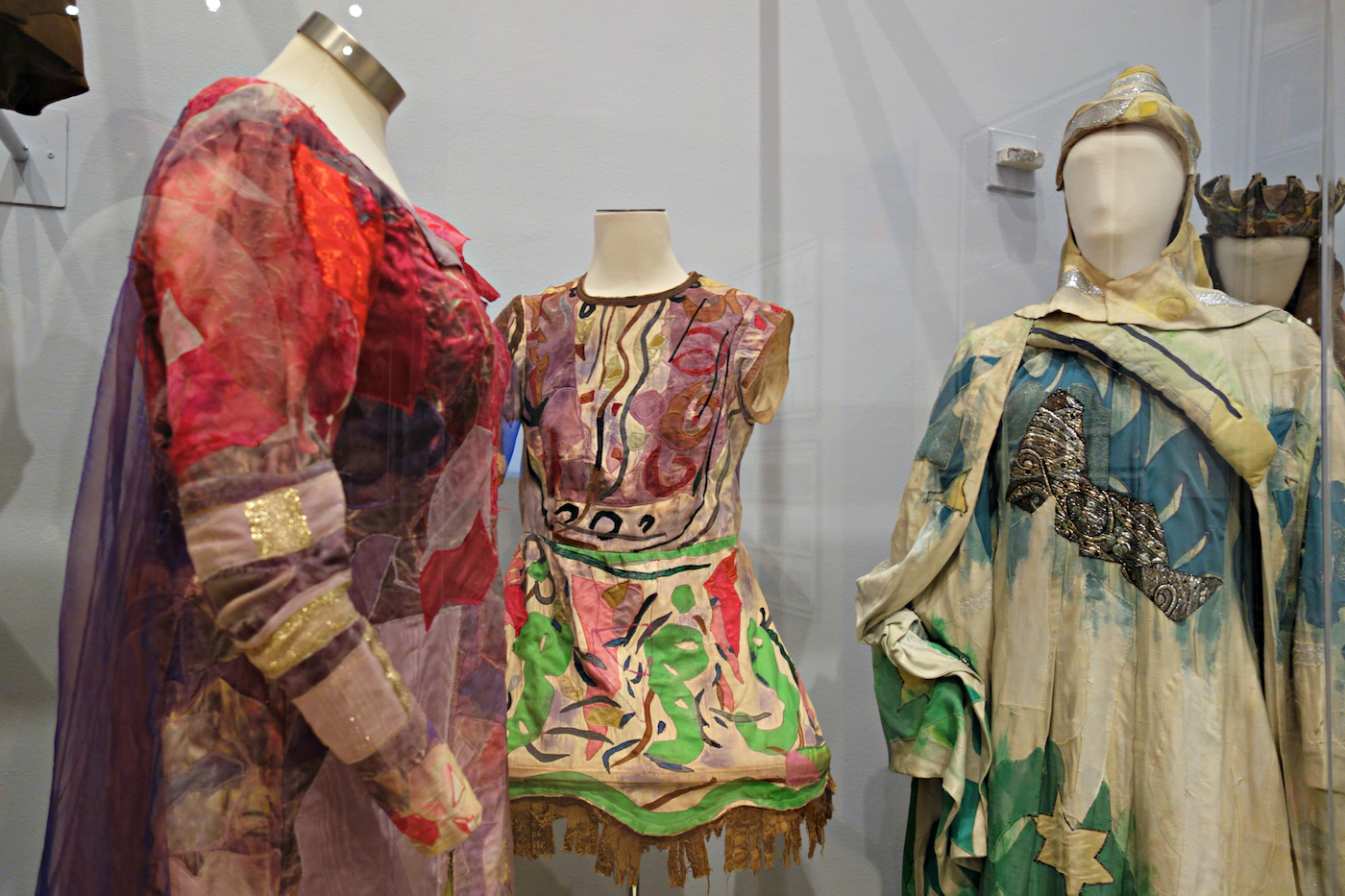

“Chagall paid attention to the smallest detail of scenery and costumes: every rock, flat, column and statue, every accessory was infused with meaning. But the greatest care was devoted to the fantastic beings that seemed to spring from a realm imagined jointly by Mozart and Chagall. The luminous world of Chagall’s Magic Flute, combining enchantment, farce and drama, is at once a fairy tale and an initiation story.” Jonathan Kantrowitz – Art History News
The Magic Flute premiered on February 19, 1967, during the Metropolitan Opera’s inaugural season. The two monumental panels by Chagall, The Sources of Music and The Triumph of Music hung in the Met’s lobby.
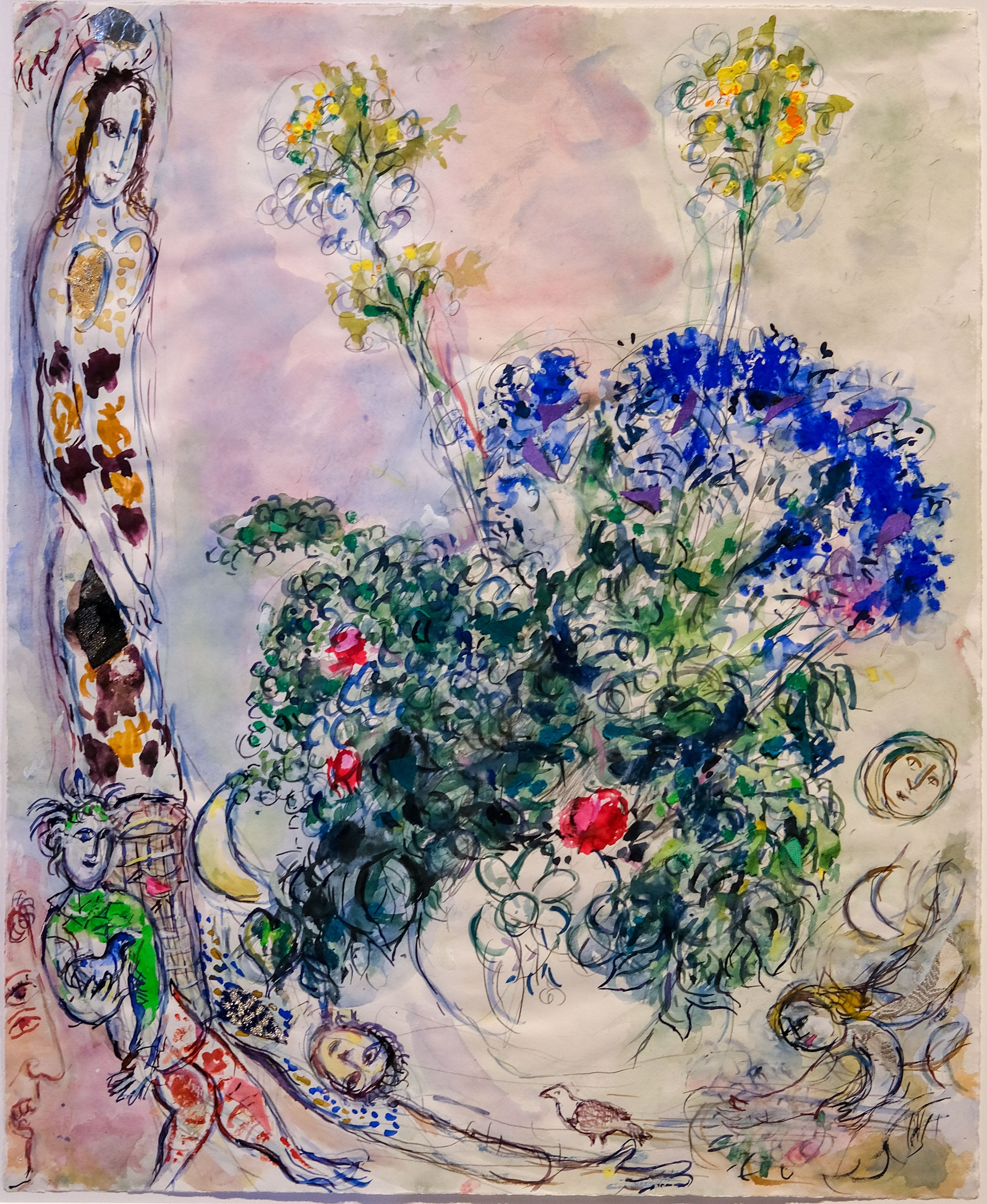
Chagall’s repertory of images, including massive bouquets, melancholy clowns, flying lovers, fantastic animals, biblical prophets, and fiddlers on roofs, helped to make him one of the most popular major innovators of the 20th-century School of Paris. He presented dreamlike subject matter in rich colours and in a fluent, painterly style that-while reflecting an awareness of artistic movements such as Expressionism, Cubism, and even abstraction-remained invariably personal. Although critics sometimes complained of facile sentiments, uneven quality, and an excessive repetition of motifs in the artist’s large total output, there is agreement that at its best it reached a level of visual metaphor seldom attempted in modern art. – Roy Donald McMullen

